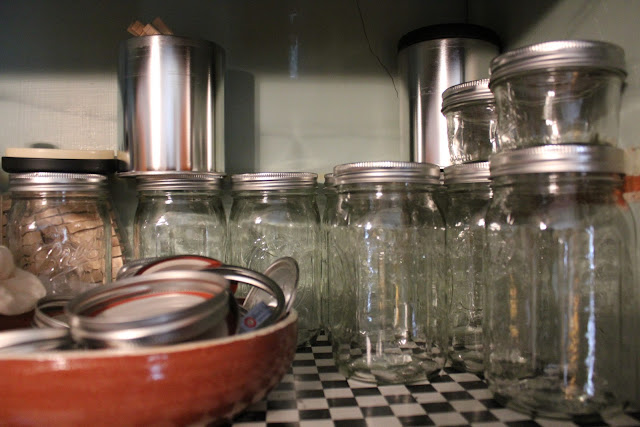Gnats have infested our house. They don't seem to be coming out of the worm bin when I open it, but they were definitely attracted to the kitchen compost tin we had sitting on our counter. While the kitchen composter had carbon filters to prevent odors, it isn't air-tight, so the fruit flies (which apparently have a great sense of smell) could smell it and get in. While we stopped using the kitchen composter and are throwing food scraps directly into the bin now, the fruit flies have made homes in the houseplants and want to stay. This article explains that there are two kinds of gnats that are typically problems with houseplants and worm-bins.(http://www.mass.gov/dep/recycle/reduce/flies.htm) This article: (http://www.redwormcomposting.com/worm-composting/fungus-gnats-in-worm-compost-bins/) is also a good resource.
Fruit Flies are a little larger, have reddish brown bodies and can often be seen hovering around bowls of fruit or juice. The gross part is that fruit flies often become a problem because they the larvae are actually inside some of the fruit that you bring home (cannot be seen by the human eye). They are especially attracted to bananas because of their strong smell. If fruit that contains larvae gets thrown in the worm bin, it now has the perfect little habitat to thrive.
The other kind of gnats (I think we have both at our house) are Fungus gnats. These insects are attracted to houseplant soil and burrow in. You can often see them around plants or on the underside of leaves. These can be a particularly dangerous problem to seedlings as they eat the delicate roots of young plants and case disease or die. The houseplant in our bathroom has a lot of gnats at this point.
War on gnats. Here is the plan:
Step 1: place sticky traps around areas where gnats are found I have hung one in the bathroom next to the plant, but it doesn't seem to be doing much.)
Step 2: make gnat traps. By placing apple-cider vinegar in a small bowl (they are attracted to the fermenting smell) and making a funnel with a small hole at the end, the gnats crawl inside the trap and it is virtually impossible for them to get out. They drown in the cider.
Step 3: allow plants to draw out between watering, the fungus gnats
Step 4: while fungus gnats burrow into compost and can be eliminated by opening the bin to the light for a day, the fruit gnats are attracted to the smell of the compost, so opening it would likely solve one problem and create another. By keeping a layer of soil on top of the compost, the smell won't be attractive to the gnats. I dig a hole in the bin to put food into and bury it. Also, by over-feeding the worms gnats are attracted to the smell of food that is rotting (because the worms can't keep up).
.JPG) |
| gnats on bathroom mirror |
.JPG) |
| sticky tape |








.JPG)
